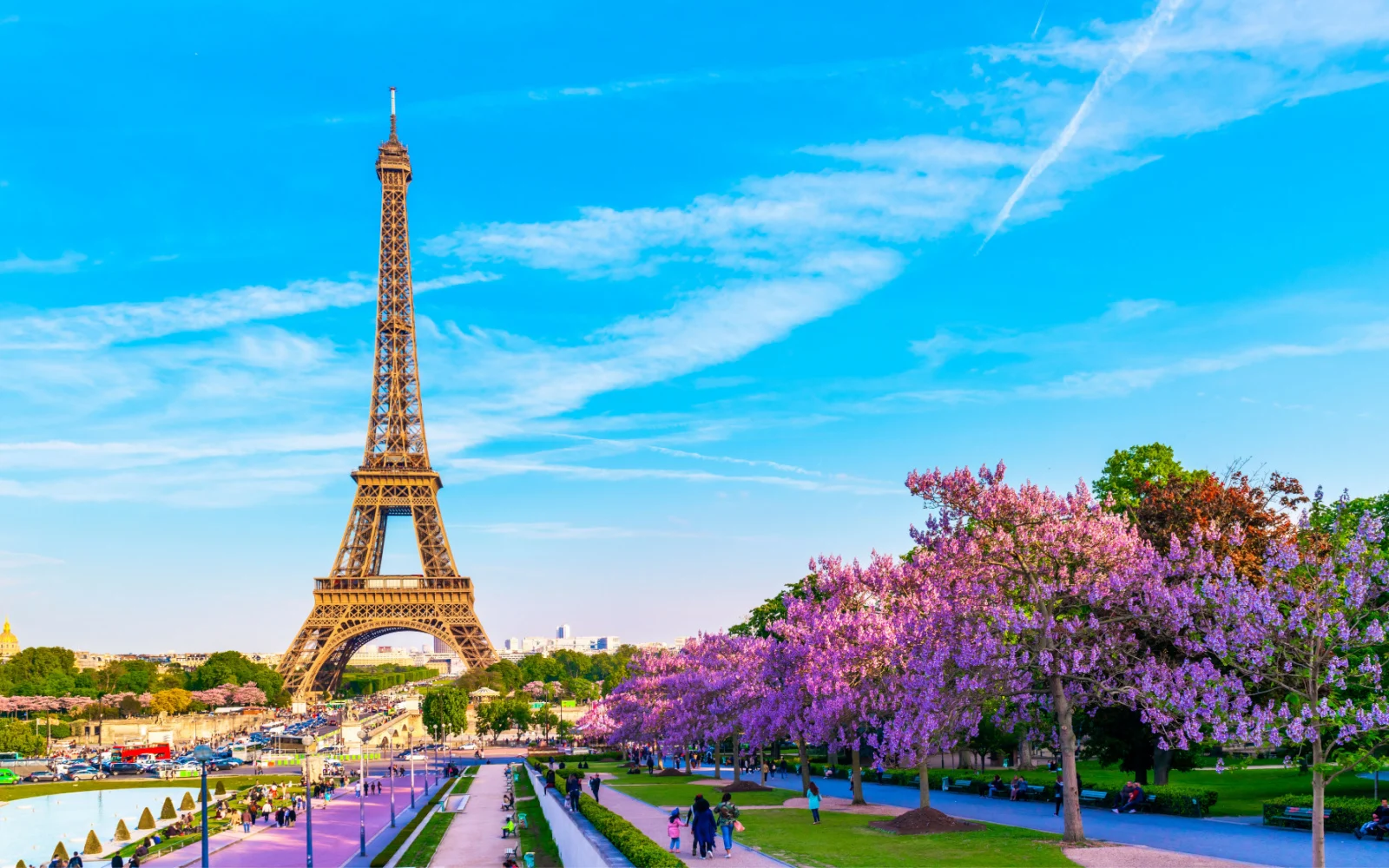The capital of the country France, Paris is a bustling city that always seems to be alive. From stunning photos of architecture and art to delicious food and stunning fashion, there is something for everyone to enjoy in this city.
25 Fun Facts About Paris for 2025
Since Paris is among the oldest and most famous cities in the world, it is little wonder there are always new things to learn about this amazing French city.
So whether you’re just interested in learning more about this amazing city or are planning a trip to visit the romantic city yourself, this is a great place to start brushing up on some little-known Paris facts!
1. All stop signs were removed from Paris
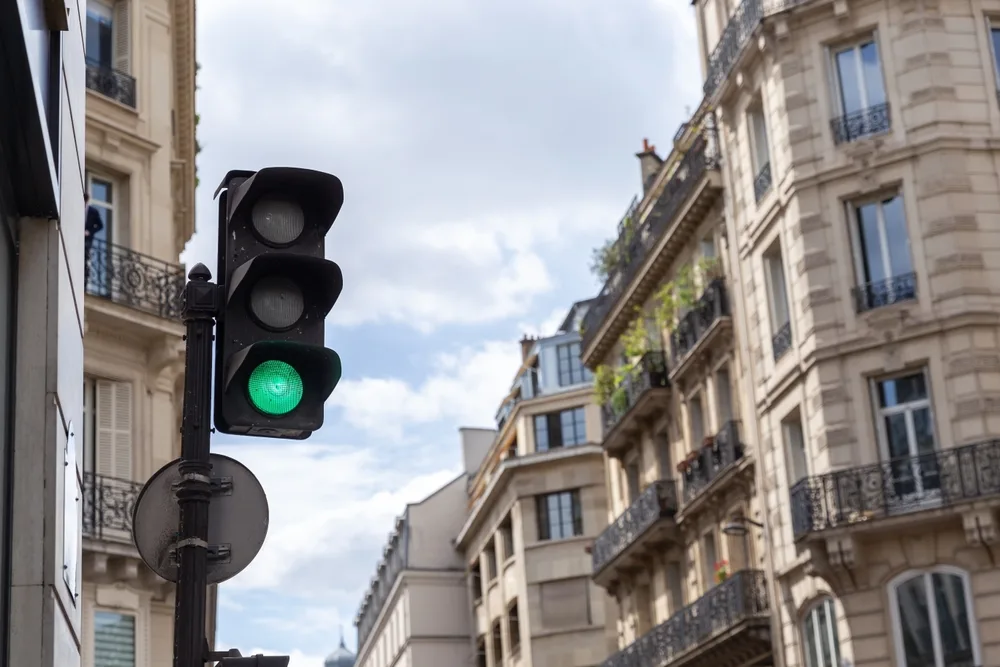
Jene Smu/Shutterstock
It is a surprising but true fact that the French capital has no stop signs. The city opted to remove all stop signs, the last one being removed in 2016. Instead, the city relies on traffic lights and good-faith drivers to keep the roads clear and the traffic moving.
2. The Louvre is the biggest art museum in the world
As one of the must-see spots for visitors to Paris, this art museum is also ranked as the largest in the world in terms of its overall size.
The Louvre has existed since its opening in 1793, and it has gathered art from all areas of the world. Each year an estimated 7.8 million visitors pass through the museum.
3. The Notre Dame Cathedral is Considered Paris’ Point Zero
When you are out in the French countryside and see signs that say “100 kilometres to Paris” that distance is calculated based on the ‘point zero’ location in Paris. That happens to be a plaque located on the from of the Cathedral of Notre Dame.
4. France as a country has 12 different time zones
France used 12 different time zones, including those that encompass Paris. The country has territories far outside its borders and even outside of Europe so its citizens are literally flung to every corner of the world
France actually is the holder of the Guinness World Record for the Country with the Most Time Zones!
5. Visitors might suffer from Paris Syndrome

Luis Molinero/Shutterstock
Media in all its forms has glamorized and romanticised Paris for decades. So much so that some people find the city doesn’t quite live up to the hype and fails to fully meet their expectations.
One of the most unique facts about Paris is this phenomenon happens so often it actually has a name: Paris Syndrome.
6. Paris Has 450 Parks And Gardens
While it is a city known for industry, architecture, and innovation, there is also an abundance of green spaces and garden oases. It is estimated that the city has more than 450 parks and gardens, many of which are open to the public!
7. The Eiffel Tower gets a fresh coat of paint
The iconic tower has been visited by more than 300 million visitors since it was first built. Weighting more than 10,000 tons it takes a lot to keep it looking so good, including a fresh coat of pain every seven years.
But the kicker is that the paint job is done by hand and uses approximately 60 tons of paint!
8. The Mona Lisa was once stolen
One of the most iconic paintings, the Mona Lisa, was barely even known outside the art circles and private collectors. It wasn’t until an employee of The Louvre decided to steal the painting in 1911 that it became a household name.
It was only missing for three years, but its legacy was forever cemented and it is still one of the most widely recognized paintings on earth.
9. Tom Cruise was denied honorary citizenship of Paris

Tom Cruise arrives for the “Jack Reacher” premiere at the Odeon Leicester Square, London. 10/12/2012 Picture by: Steve Vas/Featureflash Photo Agency/Shutterstock
Paris, like other countries, sometimes offers honorary citizenship to certain individuals. The honor is symbolic and is given as a way of recognizing those who fight for human rights.
In 2005 Paris City Hall vowed to never allow Cruise to receive the honor. This is due to his connection to the Church of Scientology, which many leaders in France see as a dangerous cult.
10. First photo of a person taken
Louis Daguerre was a French artist and inventor. In 1838 it is believed he took the first photograph of a person. He snapped the photo of The Boulevard du Temple, which is both the name of the street and the name he gave the photo.
At first glance, it appears to be an empty street but some argue you can see small figures at the far end of the street. This would make it the first known photograph of a human.
11. Paris was among the first to install streetlights
With all of its buildings, cubs, photo ops and of course the Eiffel Tower, it is easy to assume the city has always been lit up. The truth is that this happened even before electricity was easily available.
After sunset, the streets of Paris were rife with crime, which caused King Louis XIV to put a stop to this by ordering the city to be lit by oil lamps along the streets.
12. Paris is made up of smaller arrondissements
Stretching more than 40 square miles, Paris is massive in size and spread. To make it easier to navigate and to break the city into more manageable ‘bites’ the city is broken down into 20 districts, better known as arrondissements.
13. The oldest café in France
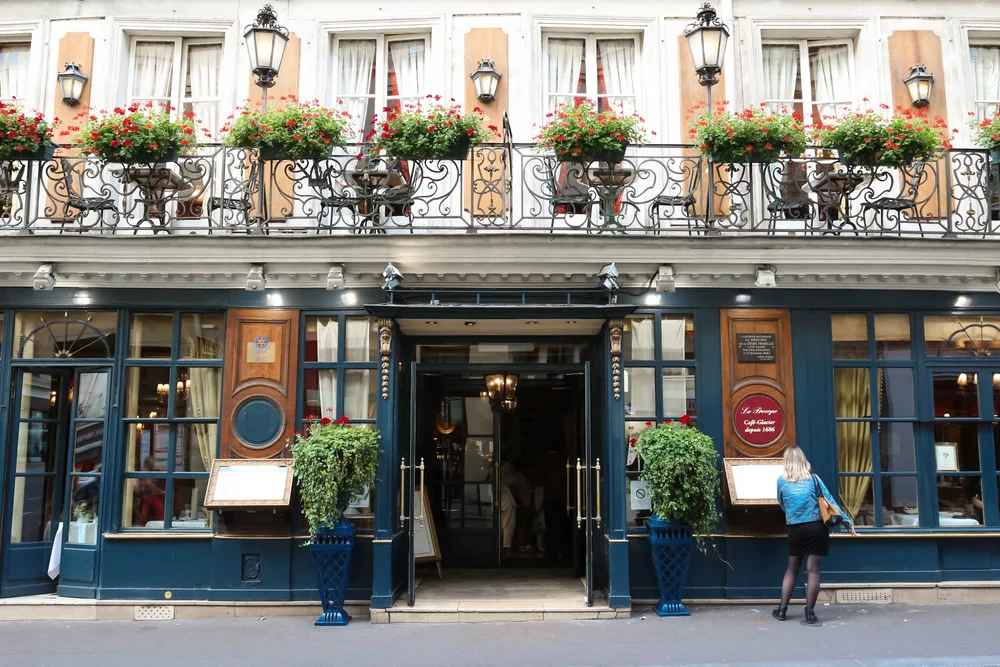
PARIS, FRANCE – JULY 25, 2017: historical Cafe Procope. It is the oldest restaurant of Paris in continuous operation – it was opened in 1686 by Sicilian Francesco Procopio. In Paris on July 25, 2017./Petr Kovalenkov/Shutterstock
The city’s first café has existed for more than 90 years longer than the United States has existed! Le Procope has been around since 1686 and it claims to be the oldest continuously-operated café in the city.
It is a claim difficult to fully prove due to the sheer amount of time but many believe it to be a factful claim.
14. The Eiffel Tower was only meant to be up for 20 years
Imagining Paris without the iconic tower is difficult but the truth is the tower was constructed on a 20-year lease. It was only supposed to be a temporary addition to the city as part of the World Fair.
It was then supposed to be demolished by 1909 and sold for scrap metal and parts. Thankfully, the Iron Lady is still standing today!
15. The guillotine was used in France until 1981
The guillotine was the iconic execution method used during the French Revolution. However, it comes as a surprise to many to learn that the guillotine was the official method of execution in the city until 1981!
And this only happened because the death penalty was abolished in the whole of France that year.
16. Free water fountains are located throughout Paris
Paris has long been a leader in technology, construction, and innovation and this is just another shining example of that. The city offers free water out of its public fountains for people to drink from as much as they want.
This was done in an effort to cut down on plastic bottle trash as people are more prone to use reusable water bottles when they visit the fountains while they are out and about.
17. The Notre Dame Cathedral is very popular
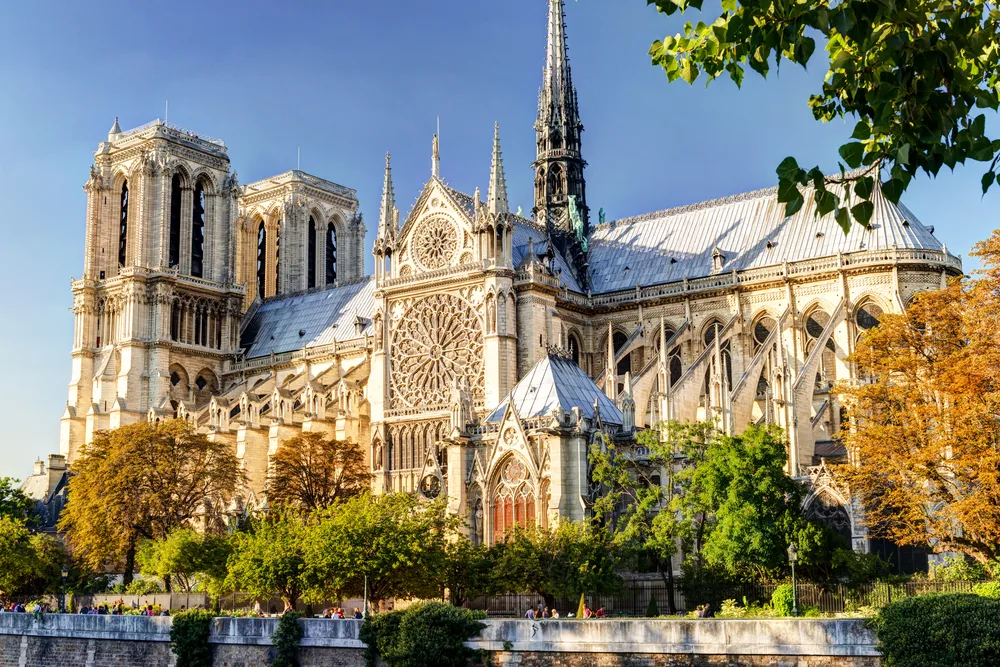
Viacheslav Lopatin/Shutterstock
Before the devastating fire in 2019 the Notre Dame Cathedral was a must-see landmark of the city. Up to that point, it saw more than 12 million visitors a year, which is a staggering 5 million more than the annual visitors stopping at the Eiffel Tower.
18. Paris was held by the Nazis for four years
The past of many European cities is tainted with the stains of war, and for Paris that past includes a four-year Nazi occupation. The city fell to the German forces on June 14, 1940 and was hed util near the end of the war on August 19, 1944.
19. There is an annual Bread Festival in Paris
Traditionally, the celebration of all things baked and bread-based was held in the center of the city. Prior to the Notre Dame fire of April 2019, it took place on the Parvis de Notre Dame.
It has been a traditional opportunity for bread artisans to showcase their skills and for visitors to enjoy all the carb-loaded delights.
20. The official motto of Paris is ‘Fluctuat nec Mergitur’.
The phrase is in Latin and literally translates to ‘tossed but not sunk’. Along with the mottos is the official crest for the city which features a ship with the motto scrawled above or below it in most cases.
21. The Patron saint of Paris is Saint Genevieve
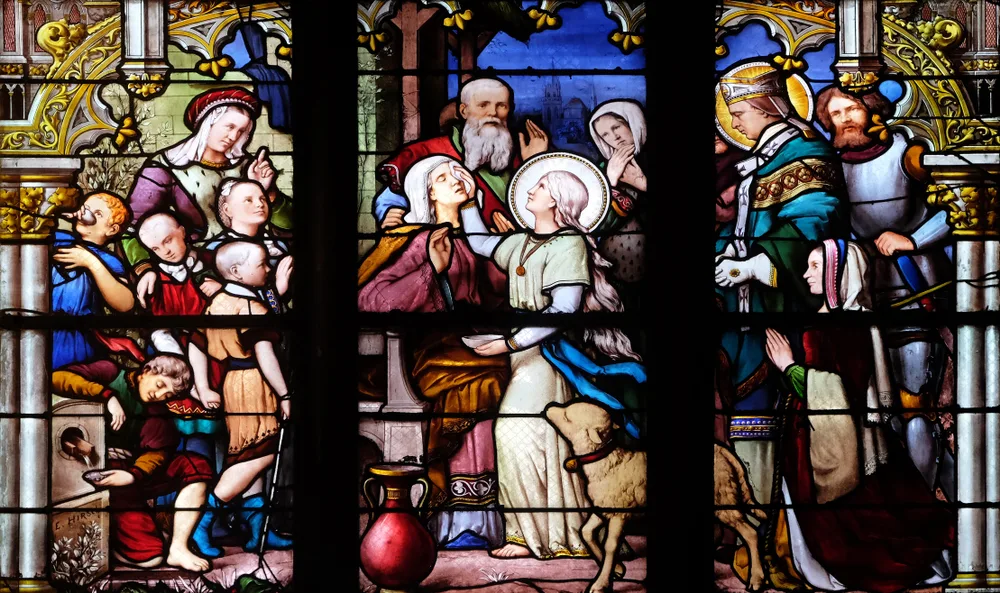
PARIS, FRANCE – JANUARY 04: Saint Genevieve giving sight to his mother in the presence of Saint Marcel, stained glass window in Saint Severin church in Paris, France on January 04, 2018./Zvonimir Atletic/Shutterstock
Born in 419 CE in Nanterre Genevieve moved to what would one day be Paris and devoted herself to the teachings of Christianity. It’s said that the prayers of Genevieve diverted Attila and his army away from Paris, preventing the invading forces from ransacking the city.
22. The Paris underground is bustling
The Paris transportation system includes an extensive underground network, known in French as the métro.
It sees a lot of use from residents and visitors alike and is one of the busiest in Europe, second only to Moscow in Russia! It is likely if you spend any time in Paris you will end up on the metro at some point.
23. Paris has over 400 Art Nouveau buildings
Among all the modern architecture and engineering wonders, there is a strong representation of Art Nouveau buildings in Paris to be discovered too.
In fact, more than 400 Art Nouveau structures, daing from the mid-1800s to the early-1900s, can be found in the city. Most of them are located in the 7th and 16th arrondissements.
24. Notre Dame’s largest bell is called Emmanuel
The famous cathedral has a series of bells of varing sizes. The largest bell weighs a staggering 13 tonnes and was cast in the 17th-century. Known as a bourdon in French, Emmanuel was the only original bell from Notre Dame to have survived the French Revolution.
25. Pont Neuf is the oldest surviving bridge in Paris
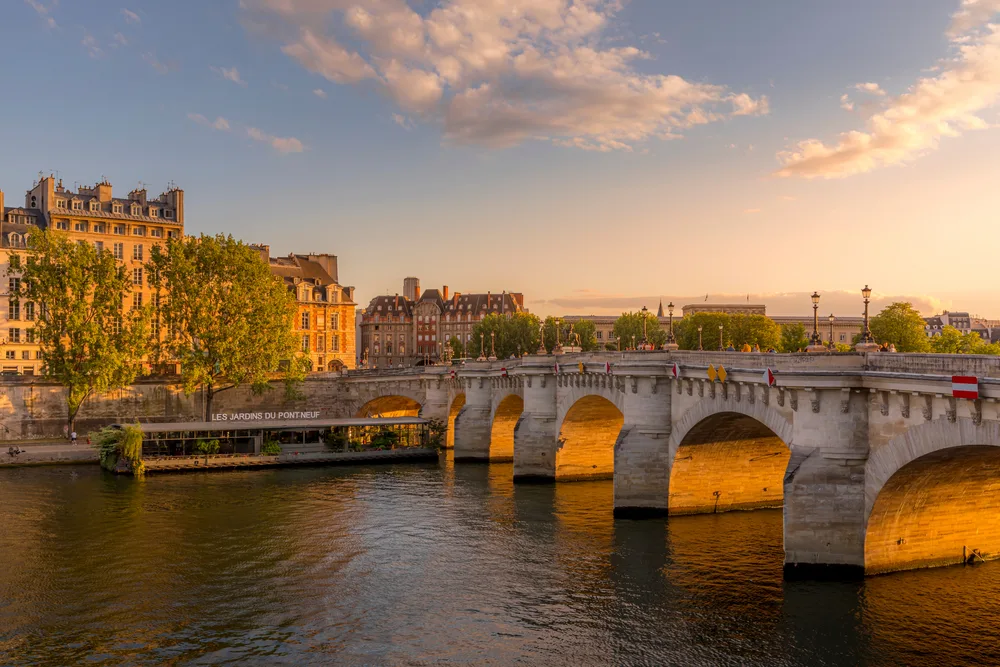
Paris, France – June 20, 2020: Pont Neuf at sunny summer sunset in Paris/Jerome LABOUYRIE/Shutterstock
Ironically, the name in English translates to ‘New Bridge,’ yet it is actually the oldest still standing bridge in Paris. It crosses the River Seine and connects the right bank with both the left bank and the historic Île de la Cité area.
Since the early 17th century, the bridge has stood as a testament to Paris’ early focus on innovation and engineering.
Frequently Asked Questions
What is Paris weather usually like?
Paris has generally mild weather across its four distinct seasons, with none being too far outside ‘normal’ for the area. Extreme weather is pretty rare, but rain is not. In Paris, you can expect light showers to come and go throughout the day at times.
The showers usually don’t last long and are widely tolerated and accepted with little fuss by the locals.
How hot and cold does it get in Paris?
Average daily highs range from 46°F (8°C) in the winter to 77°F (25°C) at the height of summer. Some fluctuations do occur but these are generally safe temperatures to plan your trip around for the winter and summer months.
How expensive is it to live in Paris?
It can be expensive to live in Paris. Surprisingly though, many consider it to actually be less expensive than its U.S. counterpart, New York. Compared to London, rents are 49% higher, but average grocery prices are cheaper by about 25% than London’s.
Do people speak English in Paris?
The official language in Paris and the rest of France is French. Unlike other European countries, English isn’t commonly spoken. As a result, most ‘average’ citizens will not like to speak English and find English-only-speaking visitors to be somewhat annoying.
However, tourists won’t have any problems finding English speakers in most hotels, restaurants and shops throughout the city.
Book Your Trip to Paris Today!
Paris is a city rich with life and vitality. There is something for everyone to fall in love with and enjoy here in the city that never seems to sleep. From culture and art to music and nightlife to everything in between, you will never run out of things to marvel at in this stunning French city.
So, with so much to see and do, what are you waiting for – book your trip today and experience for yourself all that Paris has to offer. Happy travels!



